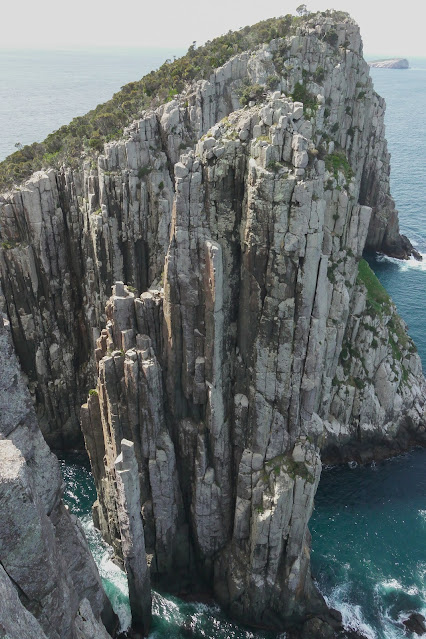Lyrebird nest - raided
While surveying singing lyrebirds in the forest on the Brindabella Range near Canberra, which included recording the displaying male described in the previous post, I also checked the progress of the lyrebird nest shown above. The nest was set on a small ledge about three metres up a small crag, which is about five metres high. The rock wall is not easy to climb up as it is slightly overhanging below the nest. As soon as I saw the nest I knew something was wrong. The top of the domed nest had been ripped off and lyrebird feathers, which the female uses to line the nest to keep the single egg warm, had been scattered across the ledge and below the crag.
The damage can be clearly seen in this second photograph. The nest is typical, formed of a large ball of sticks, larger than a basketball. This is lined with moss and then feathers, the smoky grey body feathers, which the female plucks from her belly. All three components can be seen to have been ripped open and in the third photograph, below, the single egg can be seen lying in the depths of the nest cup which once had a warm sheltered dome over it. Lyrebirds typically lay only one egg, incubation takes seven weeks, and the chick remains in the nest for a further six weeks.
This was clearly the work of a predator that had probably managed to climb or jump down from the top of the crag onto the top of the nest. The potential predators of lyrebird nests in the area include fox, wild dog or feral pig when a nest is on the ground, and suger glider, greater glider, possum or feral cat if the nest is off the ground. A fox could climb to some nests, but I don't think they could reach this one. Footage from a trail camera set at a lyrebird nest by Matthew Higgins has revealed that a sugar glider can take an egg from a lyrebird nest, so a greater glider or possum could likely take one too. This suggests that a native climbing predator would have taken the egg if it had opened this nest. But it would have taken considerable strength to rip the nest open and the egg was left behind. There was a tiny needle point hole in the egg, possibly made by a claw. A fox would have taken the egg. So, that leaves the likely suspect to be a feral cat, as a cat would be more likely to have been after a young or adult bird on the nest. As obligate carnivores, they prefer to eat meat. Fortunately, there was no evidence of the adult lyrebird having been killed, but this breeding attempt had failed.
Feral cats have done so much damage to Australian wildlife.


























